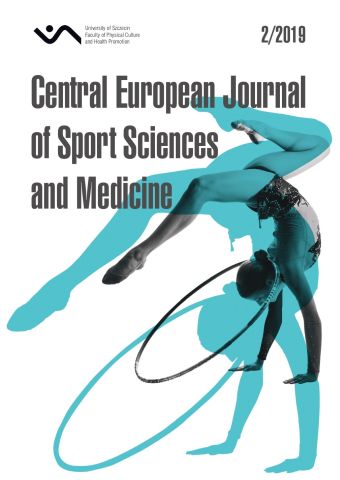
ISSN: 2300-9705
eISSN: 2353-2807
OAI
DOI: 10.18276/cej.2019.2-08




Issue archive /
Vol. 26, No. 2/2019
Nordic Walking as a Form of Recreation
| Authors: |
Magdalena
Kunysz-Rozborska
University of Rzeszów, Faculty of Physical Education Aneta Rejman University of Rzeszów, Faculty of Physical Education |
| Keywords: | recreation nordic walking sport physical education |
| Data publikacji całości: | 2019-06-31 |
| Page range: | 6 (77-82) |
Abstract
Recently introduced on the Polish market, the Finnish product under the name of Nordic Walking gains more and more supporters and followers. When trying to determine the essence of Nordic Walking we should first define the term ‛physical activity’ and ‛recreation’. Nordic Walking belongs to a general motor activity. Physical activity is the amount of exercise or physical activity needed to develop and maintain one’s health. Quite a simple technique of motion while walking with poles, the possibility of maintaining control of exercise intensity and relatively inexpensive (compared to other disciplines) sports equipment contribute positively to the versatility of Nordic Walking and its availability to any person interested in this sport. The march with the poles is one of the most commonly undertaken, and the most natural form of exercise in everyday life, especially for people in middle and old age, as these particular age groups dominate in Nordic Walking. It does not require large financial outlays or specific time and place, as opposed to practicing fitness or bodybuilding. One can just go out for a daily walk and simply take the poles with them.
Download file
Article file
Bibliography
| 1. | Antosiewicz, E. (2016). Co to jest Nordic Walking? b.pag. http://www.podkarpacie.pfnw.eu/ |
| 2. | Bielski, J. (1996). Wychowanie zdrowotne w szkole. In: Życie jest ruchem. Poradnik dla nauczycieli WF. Warszawa: Agencja Promo-Lider. |
| 3. | Burger, D. (2010). Nordic Walking Sposób Na Zdrowie i Kondycję. Warszawa: Wydawnictwo RM. |
| 4. | Dudziak, M. ( 2011). Aktywność ruchowa i jej wpływ na organizm człowieka. Warszawa: Lider. |
| 5. | Figurski, T., Figurska, M. (2010). Nordic Walking. Idealny trening dla ciebie. Warszawa: Oficyna Wydawnicza Interspar. |
| 6. | Maszczak, T. (1995). Wychowanie fizyczne i zdrowotne wobec zagrożeń cywilizacyjnych. Warszawa: Oświata. |
| 7. | Mittermaier, R., Neureuther, C. (2010). Nordic Walking. Warszawa: Wydawnictwo RM. |
| 8. | Oleksy, R. (2012). Znaczenie aktywności ruchowej w życiu człowieka. Retrieved from: www.pst.iap.pl/publikacje/znaczenie.doc. |
| 9. | Schwanbeck, K. (2013). Nordic walking. I o to chodzi. Gliwice: Helion. |
| 10. | Szwarc, H.. (1979). Wpływ ruchu i rekreacji fizycznej na somatyczne i psychiczne zdrowie człowieka. In: K. Dąbrowski, Zdrowie psychiczne. Warszawa: Wyd. IWZZ. |
| 11. | Toczek-Werner, S. (2008). Podstawy rekreacji i turystyki. Wrocław: AWF. |